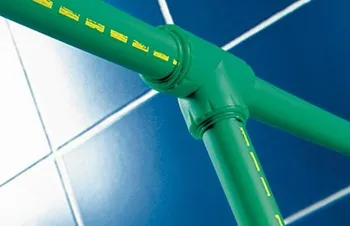Sep . 22, 2024 03:32 Back to list
pvc pipe vs ppr pipe manufacturer
PVC Pipe vs. PPR Pipe A Comprehensive Comparison for Manufacturers
In the world of plumbing and piping solutions, two materials have become prominent PVC (Polyvinyl Chloride) and PPR (Polypropylene Random Copolymer). Each material boasts unique properties and advantages, making them suitable for different applications. This article explores the characteristics of PVC and PPR pipes, providing insights for manufacturers and consumers alike.
Properties of PVC Pipes
PVC pipes have been widely used for decades due to their durability, affordability, and ease of installation. They are lightweight, resistant to corrosion, and possess good chemical resistance. PVC pipes can withstand a range of temperatures, making them suitable for both cold and warm water applications. Moreover, they are non-toxic and suitable for drinking water systems, complying with many health regulations.
One of the significant advantages of PVC pipes is their ease of installation. They can be easily cut and joined using solvent cement, which speeds up the assembly process. Their smooth inner surface provides minimal friction, contributing to efficient fluid flow. However, PVC pipes can become brittle over time, especially when exposed to sunlight without adequate protection, leading to potential cracking or breaking.
Properties of PPR Pipes
On the other hand, PPR pipes have gained popularity in recent years, particularly in hot water applications. PPR is known for its high-temperature resistance, capable of withstanding temperatures up to 95°C (203°F). This makes it an excellent choice for hot water and plumbing systems. PPR pipes are also lightweight, easy to install, and resistant to chemicals, making them suitable for various industrial applications.
pvc pipe vs ppr pipe manufacturer

The fusion jointing method used in PPR pipe installation provides a strong, leak-proof connection, enhancing the durability of the piping system. PPR is also more flexible than PVC, allowing for easier maneuverability in complex installations. Its extended lifespan and resistance to wear and tear make it a cost-effective option in the long run.
Comparison and Applications
When comparing PVC and PPR pipes, it’s essential to consider the specific application requirements. PVC pipes are ideal for drainage, sewer, and irrigation systems, where the pressure is relatively low and exposure to sunlight can be adequately managed. Conversely, PPR pipes excel in high-temperature applications and are commonly used in residential and industrial hot water systems.
Another critical factor is the environmental aspect. PVC is known for its durability, but it can be less environmentally friendly due to its production and disposal processes. PPR pipes, being made from polypropylene, are more recyclable and considered a greener alternative.
Conclusion
In conclusion, both PVC and PPR pipes have their unique advantages and applications. Manufacturers must assess the specific needs of their projects and the materials' properties to make informed decisions. While PVC pipes offer a cost-effective and durable solution for various plumbing needs, PPR pipes stand out in hot water applications and provide excellent long-term performance. By understanding the strengths and weaknesses of each material, manufacturers can better serve their customers and ensure the successful implementation of piping systems.
-
Durable DN500 HDPE Double Wall Corrugated Drain Pipes
NewsAug.06,2025
-
32mm HDPE Pipes Coil: Durable & Flexible Water Supply
NewsAug.05,2025
-
DN100 PVC Well Casing Pipes | Durable Corrosion-Proof
NewsAug.04,2025
-
HORON 25mm PPR Plumbing Pipes - AI-Enhanced & Reliable
NewsAug.03,2025
-
HORON 25mm PPR Pipes - AI-Optimized Plumbing Excellence
NewsAug.02,2025
-
Premier HDPE Sprinkler Pipe Manufacturers | Durable Solutions
NewsAug.01,2025

